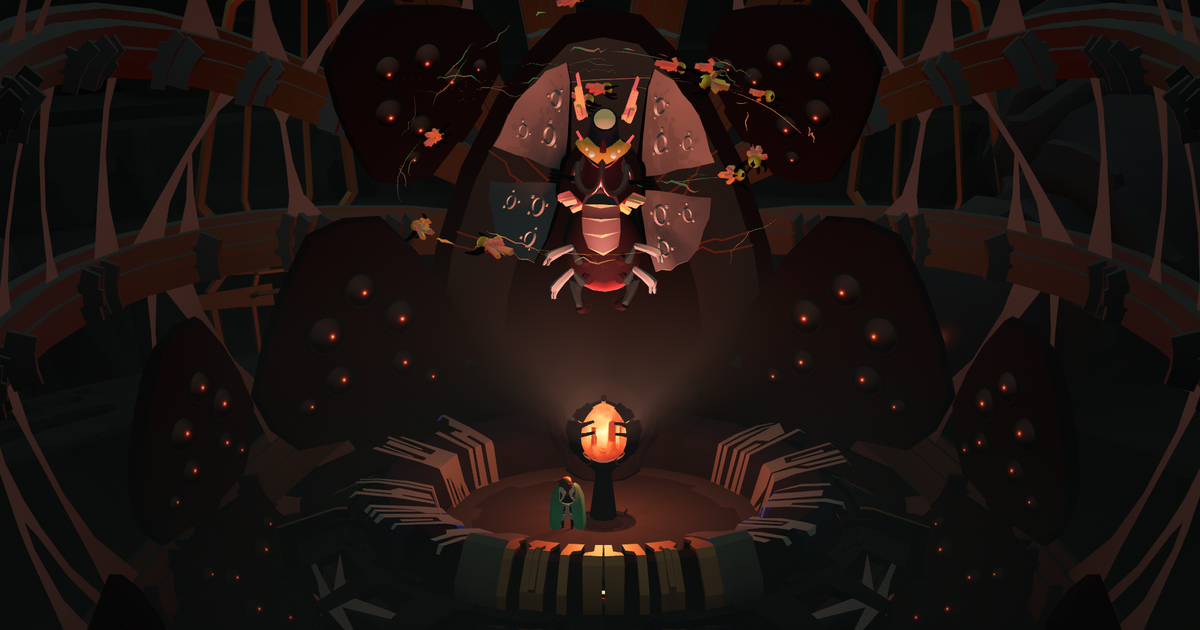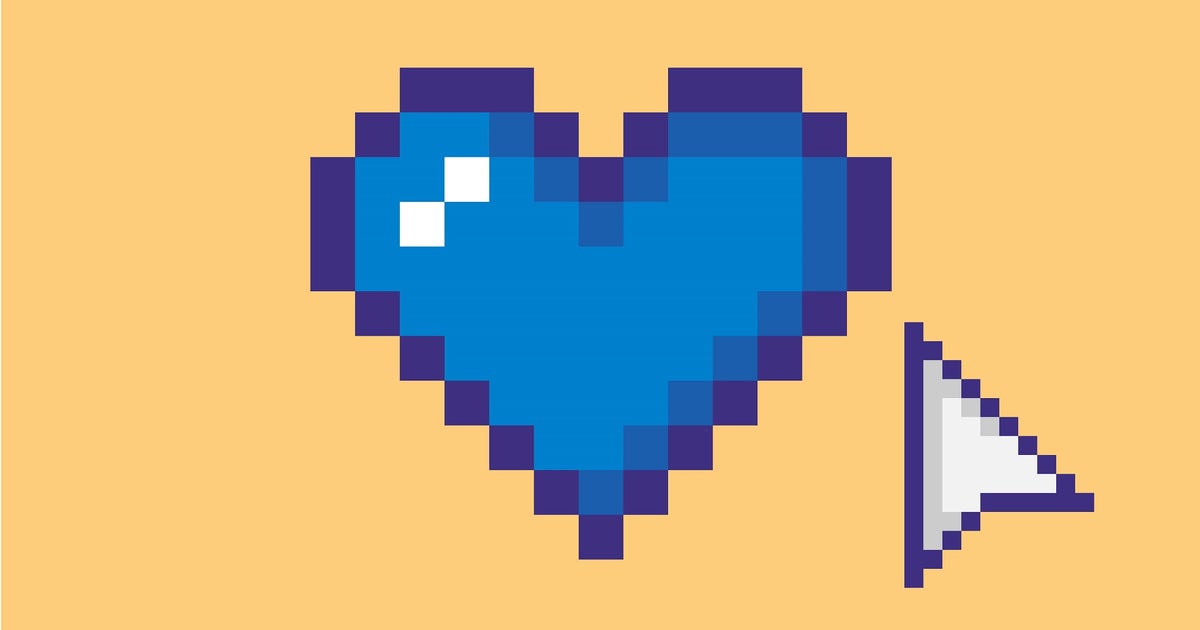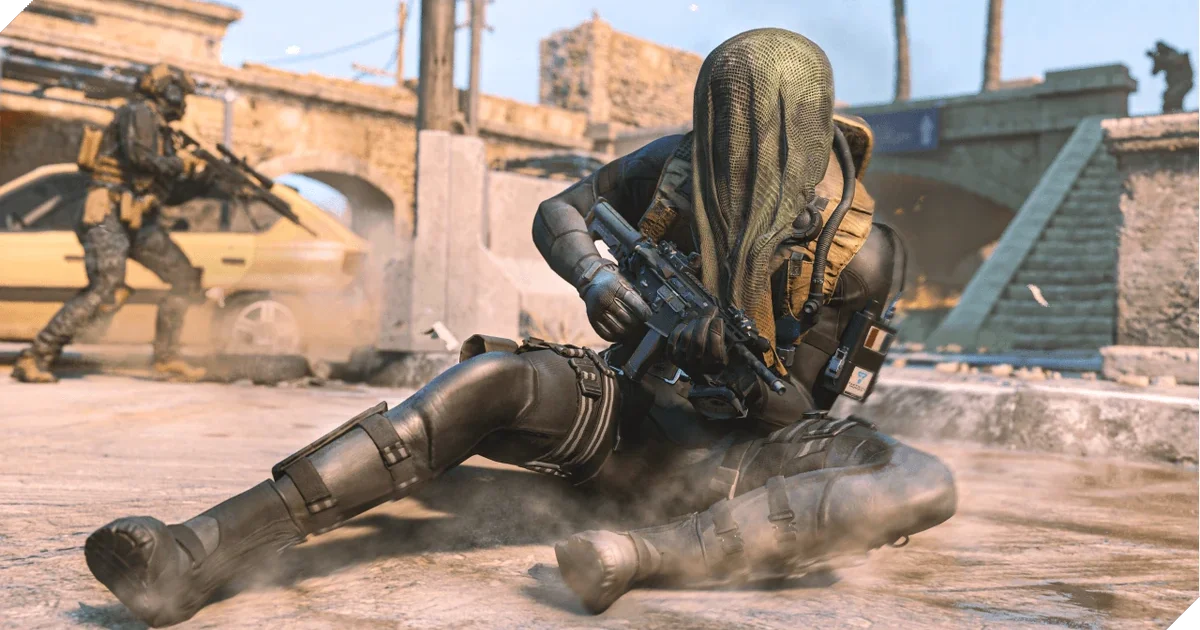Daydreaming. That’s how it started. Daydreaming. Cocoon designer and director Jeppe Carlsen, whose previous works include Inside and Limbo, was simply daydreaming one day, and the idea of a game that encapsulated worlds within worlds within worlds came to him.
“I’ve been making game mechanics and designing personas for so many years that I also just walk around in everyday life and think about mechanics,” Carlsen tells me over Zoom. “I don’t remember the exact context or what triggered it. It was just a thought of like, what if you could basically have a level, that is to begin with just a maze or a level, but you can jump out of it. And you can carry that around. And you can put these levels into each other.
“There was just that thought.”
It may have been a fleeting thought at first – something that was all just part of a daydream for Carlsen – but it was one that would not leave. It stayed with the designer, and he soon mentioned it to his friends. The idea fascinated them, much like it did him. Worlds within worlds, what could that be? What it would ultimately become was Cocoon, a breathtaking puzzle-platformer, and one of the best games to release this year.
But despite Carlsen’s clear fascination, development on Cocoon did not start straight away. He may well have loved this idea of portable, puzzle-filled maze worlds, but he was busy, so he “pocketed” it and life continued. However, this idea was simply one that he could not let go of. It kept coming back to him time and time again, refusing to stay quiet.
“And then I had this experience of every time that I thought about it – it could be a month apart or something – but it popped up and I sort of tried to go through the exercise of trying to simulate a game in my mind and how it could actually work with this idea,” Carlsen tells me. “And every time it became more concrete and every time I think there was a new layer to my thinking that made me like ‘oh man, this is really interesting’.”
One layer Carlsen thought of was to have a character, which as this point was not yet the insectoid creature we know from Cocoon, gain powers like in “a Metroid game”. This idea then evolved further, so that rather than a character getting the powers, the powers were instead given to the worlds themselves. But, even with this ever-growing idea, it was still a daydream. There were no notes and nothing was written down. It was all just up there, swirling around like a cocktail in Carlsen’s mind.
Eventually, though, the compulsion to make it a reality took over, and Carlsen approached his friend and former colleague from Playdead, audio and music director Jakob Schmid. The duo agreed that this game simply needed to be made, so they founded their studio – Geometric Interactive – to do just that.
“But at that point it is still just the sort of logical, mathematical, almost like, conceptual mechanics of the idea,” Carlsen explains. “We had no thought about what universes it would take place in and what kind of art style it would be, or what story it would be. We had none of that, only just the mechanics.”
This led them to create a prototype for the game. Over the course of several months, Carlsen allowed the thoughts that had once been stashed so carefully in his mind to be steadily realised through coding and building. A world of colourful labyrinths, symbols and squares soon emerged, which allowed the developers to finally find out if this concept actually made sense. And it did.
While lacking refinement, and with a playable character that was “cute” (it was a grey square with two eyes and a basket) but far from fully formed, they already knew they were on to something special. Work on the game continued.

The team soon brought on Erwin Kho to be art director on the project. “They emailed me… and sent me this prototype being apologetic, like, ‘please just don’t look at the art or whatever it is, just try to imagine this in your 3D style’,” Kho recalls, smiling. But even as it was, Cocoon’s prototype was enough to impress him, with the art director joking it all looked “legit enough” for him to know he wanted to be part of this project.
After more testing and plenty of time and patience, the team at Geometric Interactive eventually created the game they wanted (and Carlsen actually began writing things down, with flowcharts and diagrams ensuring the developer was able to keep track of which puzzles went where, and how they would all fit together in Cocoon’s wider worlds).
Cocoon was finally ready, and Geometric Interactive released its puzzler to the world, winning scores of praise in the process (Eurogamer’s own Christian Donlan awarded Cocoon five out of five stars, calling it “pure honey on a spoon”).
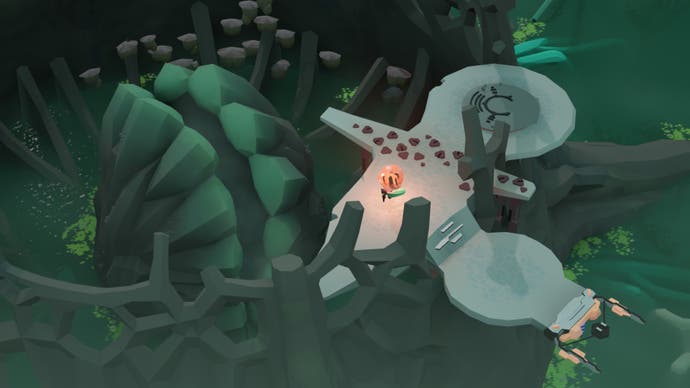
As with Carlsen and Schmid’s previous game, Inside, Cocoon’s story is all told without a single word being uttered. Instead, the narrative is provided by the environment around the player, and the sounds they can hear. This leaves the story wide open for interpretation. Each person experiencing the game is able to imprint their own thoughts and feelings into it. When I completed the game earlier this month, I had laid out a narrative in my mind for what had just happened. I ran this narrative by others who had also finished the game. Our stories were not the same.
“For us, we had lots of discussions about ‘why is this character doing all these things?’,” Kho tells me. “It was a way to build this lore, and this back story for this particular universe, and why things are the way they are… but, it wasn’t meant to be super explicit from the get go.
“For me, all those ideas that we shared and the backstories we built up on, it was something for me to hold on to, so that whatever art I would make, I would make it in a way that would somehow highlight aspects of that story. Not necessarily for the player to immediately recognise, but it was like a guiding stone for me, a little bit,” he says.
“Obviously there’s an [overarching] sort of logic to the things that are happening in the game, like,’Who are you? Who are you in relation to the puzzles that you awake in front of the orbs?’ And that’s something that we agree on, I would say, is that logical sense to what is going on in this game,” Carlsen adds, deliberately not telling me exactly what the Cocoon team believes this to be.
“But then when it comes down to the lore, such as ‘I wonder who has built up these puzzles?’, I’m pretty sure that if you ask Erwin, and me and Jakob, if we had to give our own explanation of why things are the way [they are], we would all probably give different explanations.”
Kho actually once tried to write down something more concrete on Cocoon’s lore, but what he thought the story was didn’t resonate with Carlsen, something both still find rather amusing. But this did not matter.
“As long as Erwin has a lore for how he can make consistent landscapes that feel like there is intent behind how they look and how they are built – and I can also look at it, and my imagination is also firing on lots of cylinders and goes ‘Yeah, this is really interesting!’ – I think, mission accomplished,” Carlsen says.
Kho tells me his version of Cocoon’s backstory became almost like a “language” or an “alphabet” that provided subconscious background knowledge for him to work from. He could use this to influence his work without it ever being explicitly stated. “I could just pull out of this [subconscious bank in my mind] as the project went on,” he explains.
This method clearly worked, with Cocoon’s landscape and architecture incorporating both organic and futuristic elements in perfect synergy. When I ask how he knew he was synthesising the right stuff, he smiles and says much of it was “feeling”. However, while his feelings would often take him in the right directions, a lot of the credit can actually go to Cocoon’s nameless insectoid protagonist.
“The whole idea of the worlds being biomechanical and having these organic components too, that really flowed out of the design of the little protagonist that you play as, because that one was not as insect-like from the get go. That also evolved over time,” he says.
“When that design was one that we were a lot more happy with, and how it also fitted into the backstory… that also steers my brain in a particular direction.”
Kho then started looking to nature to inspire his artwork, marvelling at the structure of ant nests, wasp nests, and termite nests. “All the shapes are made out of the local immediate material around it, but then shaped in slightly artificial ways,” Kho says.
He then found himself compelled to look at real-world examples where architects have created huge structures out of rock facades, such as Petra in Jordan. “There’s this beautiful tension between the natural rock and then the artificial involvement of the human hand. But it’s not something that we’re really familiar with,” he tells me.
“So for me, I thought that it was interesting to work with this sort of civilisation [in Cocoon] where they have all this architecture going on, but it’s all made out of local materials. Like, how beautiful and how amazing is this?”
The civilisation in Cocoon is one that is at the height of its power, Kho says, able to work entire worlds into little marble-like orbs, so “you know they are extremely intelligent” and also extremely capable.
“I wanted something to convey that sort of enigmatic aspect of it,” Kho continues, adding that at the same time Cocoon’s worlds still had “to be really beautiful, and very delicate and elegant.”


The design of Kho’s worlds, and this marriage between the natural environment and human history, went on to inspire Cocoon’s audio design. Carlsen tells me Schmid (who was not present for this interview) used Kho’s artwork to ” figure out how the sound [of Cocoon’s worlds] is made”. Schmid did not begin to create any of the music or audio until he had the visual designs to look at.
“Jakob has this interesting approach where he has made all the sound effects with a synthesiser. There’s no recorded sounds in the game. There’s no samples or anything that is being used. Everything is made using software synthesisers,” Carlsen says.
“[Schmid] has made his own synthesisers that are running as plugins while you’re playing the game – they are running in runtime, which means that he can make the music not loop. And it means that the music can have constantly small variations in how it plays because it is real-time played and generated music,” he tells me.
Two audio designers were also brought on to work on Cocoon’s sound effects, and these were also created using synthesisers.
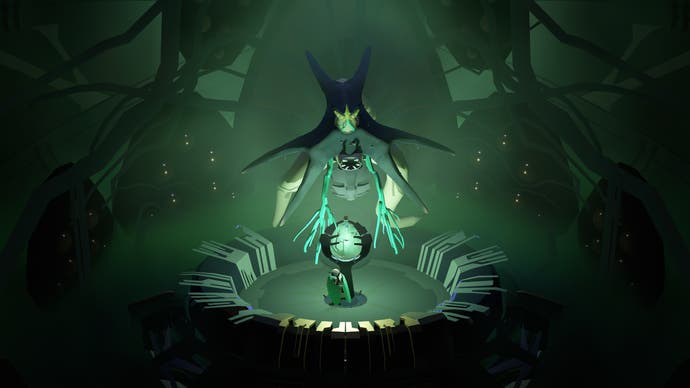
Carlsen calls Cocoon “the most complex game idea” he has ever had, but he did not want to overwhelm players. This is why Cocoon actually has a very simple control scheme. You use a joystick to move, and one button does the rest of the work. There are no triggers, no combos, and no menus with upgrades for players to navigate through.
“What I’m going to ask the player to solve is a complex thing. So it made sense for me to then say, ‘What can I do to help you basically figure this out? How can I not make this into a complex product?’ was basically my thinking,” Carlsen explains.
“I have to pull in the other direction somehow. And then one of the obvious ways to do that is to start with the simplest imaginable control scheme. Because that removes a lot of noise.”
For a while, Cocoon did actually have a second button, the developers tell me. However, those testing the game felt this addition was too confusing, often swapping the two buttons around in their minds. “It drove me nuts,” Carlsen laughs.
Needless to say, the team managed to find a way to make Cocoon playable with just one button and the joystick. This did mean tweaking certain bits of gameplay, with Carlsen saying originally the orb players can collect and shoot projectiles from was once able to be fired anywhere thanks to the second button. However, when the second button was removed, the team subsequently changed this so the orb would only shoot at certain spots.
Carlsen is not disappointed by this decision, however. He actually believes it made Cocoon’s puzzles better as a result.
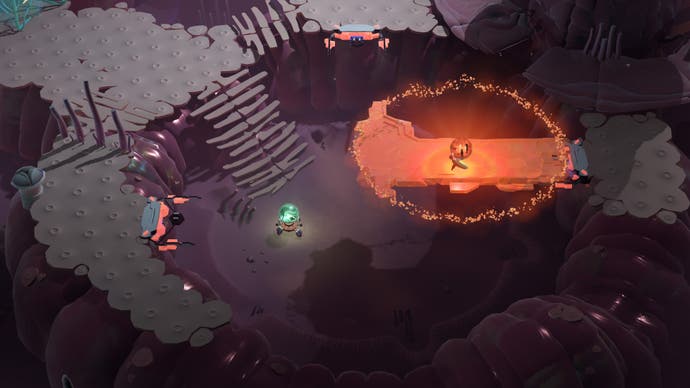
Our conversation turns to the orbs themselves, and the powers they hold. With the right orb in hand, players can discover hidden pathways, or manipulate the environment around them to make once clouded areas solid (and vice versa).
But it turns out, there were actually several orbs that were cut from Cocoon ahead of release. Carlsen and Kho tell me about a rhythm orb that made it all the way to the demo testing stages. However, it was removed as Carlsen found the constant rhythm going on and off as the game played “annoying”.
“I think my biggest problem with it was, you unlock these different paths with the different orbs, but it doesn’t mean that you are using them all the time. You are using them occasionally. And then, just having this rhythm just going… It’s so annoying. It’s like why? Why is this going about and, like, popping?” Carlsen laughs.
As with the other orbs in the game, this rhythm orb could also be used like a battery to power Cocoon’s doors and other devices found within the worlds. However, it would only work when the rhythm was “on”. For example, when the rhythm orb was powering a door, the door would start opening and closing on a loop in time with the beat.
“All sorts of mechanics would go rhythmical… the idea was that you could then jump into this world, and then you could configure the rhythm from the inside, so you’d eventually find the rhythm heart or whatever, inside the world. There, you could maybe offset or like, extend the rhythm. So you get a different tempo on it, which you could then use in the other worlds in a different way and stuff,” Carlsen explains. However, while he felt this was fun, he also couldn’t find a way to “not make it a little bit annoying”, so it had to go.
Other ideas the Cocoon team had included freezing time, Carlsen and Kho both tell me. “You could put an orb into a time frozen bubble. So let’s assume you had a word that had a bubble in it. And when you’re inside that bubble, you can move it out but everything else would be frozen in time. Then if you took an orb and put it inside that bubble, and then went into that, that entire world would now be frozen in time because it is technically encapsulated and frozen in time from its parent world,” Carlsen says as I try to keep up.
“I think those types of ideas just never really carried it into the game, unfortunately, but it is fascinating. It’s like basically, what if you had an ice world and you put it in an oven, and then you go back and say ‘oh it melted!’,” Carlsen laughs, as Kho tells me Carlsen really wanted an ice world (“I really did, proper games have ice worlds!” Carlsen jokes).
Cocoon also once had “guards” rather than the bosses. These guards could detect the player, and kick them out of any given world. “We had almost like stealth sequences, but they were a little too simplistic and lame,” Carlsen says. There was also once an invisibility cloaking orb, that would have aided in these stealth sections, and a mirror orb that could orientate aspects of a world when used, like a compass.
“So depending on how many layers in this compass world would be, the compass would be in a different direction. So if the compass only had one parent world, it would go north, if it had two parent worlds, it would go east, if it had three parents it would go south. So it was like, you had to figure that out, in order to get this orb to shoot in the intended direction. You had to get deeper down the world hierarchy,” Carlsen says. However, this idea began to get too structurally challenging.
“You want each of these powers to feel like an empowering moment – you really got a new toy that you can use. So only getting a toy that does something with the other orbs just didn’t really make sense.”
Yet another orb that Carlsen and Kho had in mind for a long time during Cocoon’s development was a static orb, which could cause holes within worlds. “Basically, if you can imagine that you have an orb, you jump into the normal orbs that you can jump into, but then you place another object like the static orb over here [Carlsen gestures above his shoulder], then when you jump into the other world, it’s like the static orb just stays [on the screen]… It is this weird science fiction mechanic.
“You jump into the world but the static orb sort of punctuates, it punches a hole through dimensions,” Carlsen enthuses as he shares these ideas. Kho and Carlsen both smile at me, clearly aware that I am utterly bamboozled by the whole thing.
.png?width=690&quality=75&format=jpg&auto=webp)
So, what is next for the Cocoon team? Cocoon took over six years to make, and was a project with a huge amount of passion behind it. Could we see more from these orb worlds in future? For now, “we are taking some time off, but we’re also working on our next [game] slowly,” Kho tells me.
“There is an idea I have been thinking on,” Carlsen says. “Not for as long as Cocoon, but I have been thinking on for a while.”
The two remain coy when I ask more about this mysterious game, however Carlsen does tell me that whatever it does turn out to be, it won’t be the same “type of concept” as Cocoon was.
“It’s going to be something else,” he teases, with a knowing smile and a wave as I close down the call.
